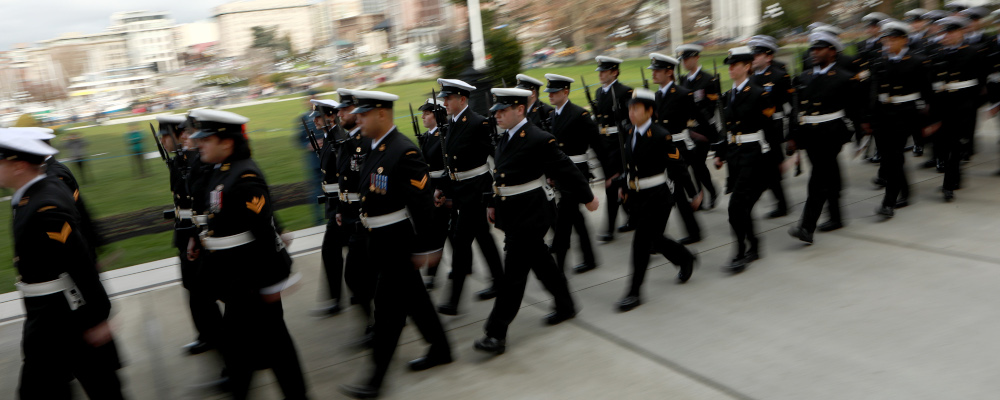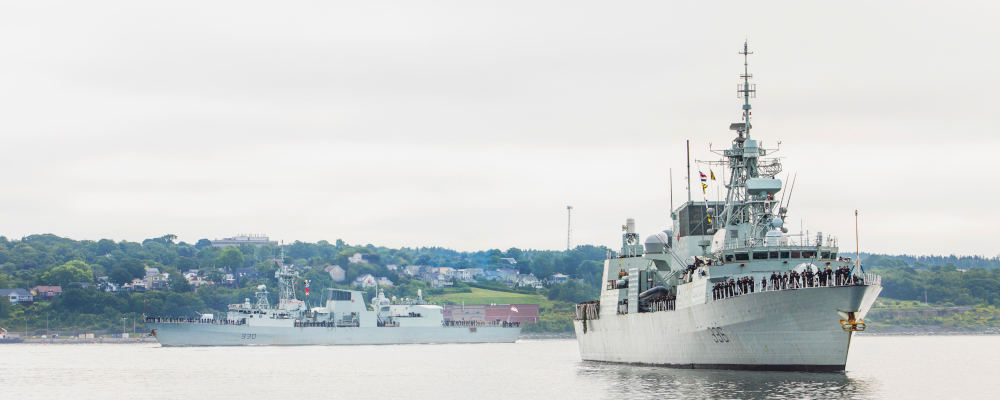In a couple of weeks’ time, the U.S. Government Accountability Office will release its annual weapon systems assessment. I’m not going out on a limb here, but for the 22nd time in a row, it will show that a majority of major programs have some level of cost overrun, delays, or are lacking performance.
There are many reasons for this outcome, but a good portion of the issue comes down to risk. Military equipment, especially for major combat capabilities, typically incorporates cutting-edge technologies and is built to tolerances that far exceed civilian and even industrial grades, but is also produced at relatively small scales, often for bespoke requirements. Basically, the challenges of integrating cutting-edge technologies into an effective and reliable combat system are immense and cost overruns are unavoidable.
The question is how states can best mitigate these potential negative outcomes. Looking at the U.S., a key paradigm has focused on managing risk by balancing trade-offs, making smart investments, and implementing strong program fundamentals. Canada’s system is comparatively weak in these respects, despite how critical they are for program delivery.As in line with the broader public service practices, the Canadian government just avoids risk altogether rather than managing it. Instead, it tries to offload it onto contractors. These contractors then effectively put a price on it, inflating the total cost to government. Even then they are not immune from some of these deleterious consequences. Despite their best efforts, programs frequently go over budget and the costs for the most part are borne by the government.
There are a lot of reasons why this situation is allowed to continue, but in part, it is because Canadians are fed a steady diet of unrealistic expectations surrounding defence procurement, instead of being given genuine insight into the tedious but constructive work that addresses the real problems.
In short, the country has a good ideas fairy problem. This is a military colloquialism describing individuals who propose seemingly helpful ideas that are impractical or potentially even harmful if implemented. Canada’s civil society discourse is littered with discussions that promise perfection over the gritty realities that confront the government as it tries to navigate these issues. There are many sources, including politicians trying to win cheap political points, contractors hoping to muddy the waters for their own offerings, and commentators who often try to make helpful suggestions that are anything but.

The poster child for this challenge is the Canadian Surface Combatant program. It has been a multi-decade effort to replace the Royal Canadian Navy’s 12 Halifax-class frigates and the three now-retired Iroquois-class destroyers. The CSC is the largest military procurement program in the past 80 years and will essentially become the core of the RCN’s capability for the rest of the century. The ships of the current Halifax class desperately need replacement as they are already exceeding their projected thirty-year lifespan.
To be sure, the CSC has seen cost overruns and major issues. The government has revised its projected costs as last suggested the acquisition costs to be approximately $60B. At the top end, the Parliamentary Budget Office has estimated that the acquisition cost may be as high as $80 billion as of 2022 and a total lifetime cost of just over $300 billion. National Defence has resisted releasing its current estimates, but it is clear that its official numbers are significantly higher than the current $60 billion number.
That being said, the government’s problems are not out of the ordinary compared to contemporary allied navies’ experiences, especially the design approach. Canada’s approach was to use a “reference hull design,” which is alternatively known as “parent design” in the U.S. It essentially takes an existing hull design and basic systems, such as propulsion and habitation, then customizes it with mission-specific systems: sensors, weapons, command and control, etc. As the U.S. Congressional Research Service noted, parent-design approaches “can reduce design time, design cost, and cost, schedule, and technical risk in building the ship.”
For the CSC, Canada selected a derivative of the Royal Navy’s Type-26 design. Australia did the same for its Hunter Class frigate. The U.S. has employed the parent-hull approach on three classes of vessels, the most notable being the Constellation class frigate—a vessel intended to supplement major combatants in less demanding roles than what the RCN envisages the CSC to operate in. Yet the savings for the parent-hull design has not materialized to the extent that any of the three navies have hoped. Given its high cost, the CSC has attracted significant criticism and elicited many impractical ideas.
The most trenchant criticism of the program here in Canada has come from Alan Williams, a former assistant deputy minister for materiel at National Defence (essentially the head of procurement for the department) in the 2000s. In response to a report I authored on the CSC in 2022, and National Defence Committee testimony, he has variously described the CSC as “unaffordable” and one that will contribute to the bankruptcy of the military, citing the PBO’s $300 billion dollar figure. That certainly sounds horrific—until it is properly contextualized.
First, concerning the program’s overall affordability, it’s important to note these numbers are for the entire fifty-five-year lifespan of the project (2025-2080). If we take the PBO’s $300 billion lifecycle estimate and estimate the cumulative GDP over that period (approximately $285 trillionThis figure was arrived at by taking Budget 2024 figures and applying a declining growth rate after 2030 (1.98 to 1.54 percent in 2080). Even accounting for zero economic growth between now and 2080, would yield a result of 0.18 percent of GDP for the CSC program.), it would mean CSC would only account for 0.11 percent of GDP. Put another way, If the government meets its NATO commitment of spending 2 percent of GDP on defence, the Navy’s most visible capability (and arguably the entire military’s) would only account for less than 10 percent of the entire military budget. That is an affordable cost, all things considered.
Nevertheless, despite the existential threat he claims is posed by the CSC’s cost, Williams does not recommend Canada curtail the Navy’s international role (despite it being disproportionally small for a country with its economy). Instead, he raises a number of alternatives to acquire a similar level of capability that he assures Canadians will come at a lower cost.

He suggests Canada acquire U.S.-built Constellation class vessels, which he asserts could be acquired for $1.5 billion a copy, and which he claims is one-third the cost of each CSC. It is a quintessential good idea fairy argument. First off, the U.S. has no spare production capacity, and would not export such vessels, so the idea is moot before it starts. But parsing the details of his claims, it is clear that the potential savings identified by Williams by going with this option are illusory.
A recent shipbuilding review undertaken by the U.S. Navy suggests that the Constellations will be three years late, while official budget documents and estimates suggest that the per-unit costs are rising dramatically. Already the program has seen a 40 percent increase in per-unit costs and is almost certainly facing another 10-20 percent increase in the near future. Now instead of being $1.5 billion, the likely per-unit cost for each Constellation is likely significantly above $2.0 billion. Because of differing accounting methods, an apples-to-apples comparison is difficult, but according to the PBO in 2019, the per unit cost of each frigate, after the eighth vessel when the price stabilizes, is likely around $2.2 to 2.5 billion. So, while the per-unit cost of the current program might be higher than the Constellation, it’s factually incorrect to state it’s three times as costly as its American counterpart.
Williams has offered other proposals, but they fit roughly the same mold: superficially compelling ideas with unrealistic timelines and little to no potential cost savings. As the Constellation-Class’s and other countries’ experiences suggest, Western nations are facing similar pressures in that their shipyards are encountering severe supply chain issues and a dearth of trained staff to produce warships on cost and budget. Furthermore, any competitor we might select will take years to finalize a design and sort out the contracting, all of which will almost certainly delay the replacement of the Halifax class.
What should be clear is that these alternatives are not realistic and have the potential to damage the RCN far beyond that of procurement. The Navy leadership needs only to look over to the Royal Canadian Air Force and the ongoing saga of its tactical fighter fleet. The ten-year delay in acquiring the F-35s, after chasing the false dream of a more cost-effective aircraft, severely damaged morale among personnel and contributed heavily to plummeting pilot and maintainer retention rates. As noted in an earlier column, there are now real questions about whether the RCAF can maintain its responsibility to defend Canadian air space as part of NORAD in the coming years. The F-35 program was a classic example of what happens when the good idea fairies are taken seriously, and now Canada is paying the literal and figurative cost of that misadventure.
Unfortunately, good idea fairies pervade our landscape, offering up “helpful” ideas about doctrine, and specific capabilities to purchase. Deconstructing their ideas takes valuable time and energy, drawing attention and focus away from important debates and issues that affect defence in Canada.
In the end, the Canadian military deserves better. We all want Canada’s defence strengthened and our military to meet its capabilities. But first, we must dig ourselves out of the mess we find ourselves in, and the most important initial step to solving a problem is seeing it clearly. Unfortunately, rather than directly address the many really difficult issues in defence, our national conversation is locked in a perpetual state of naïveté and misdirection. It is not helping to resolve our problems in the least.
Recommended for You

Joe Varner: Canada’s selfish disregard of defence is the Achilles heel of NATO’s northern security

Richard Shimooka: We must learn the right lessons from Canada’s historical heroism

Michael Kempa: Downplaying the treason of MPs and senators is a betrayal of Canadian democracy

‘They fight to end conquest’: 80 years of reflections on D-Day and the great fight for freedom











